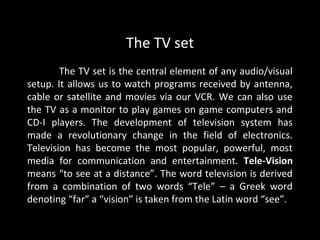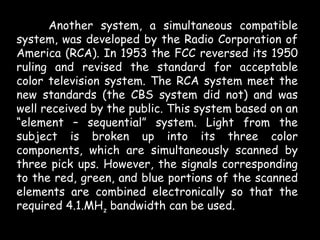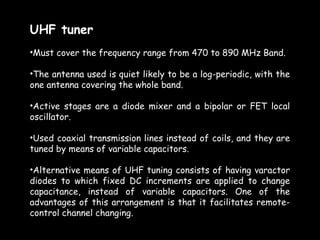The document discusses the history and development of television technology. It describes early color television systems, such as CBS's field-sequential system from the 1950s and RCA's compatible color system from 1953. It also outlines some key technical standards for television systems, including lines per frame, frames per second, and bandwidth specifications for American and European formats. Finally, it provides block diagrams illustrating the basic components and signal flow for black-and-white television transmission and reception.























































































